Max Ernst’s Woman, Old Man, and Flower (1923–24): Four Paintings in One Revealed by Technical Imaging
Abstract
:1. Introduction
2. Methods
3. Results
3.1. A New First State
3.2. Second State
3.3. Third State
3.4. Fourth and Final State
3.5. Pigment Identification
4. Conclusions
Supplementary Materials
Author Contributions
Funding
Data Availability Statement
Acknowledgments
Conflicts of Interest
References
- Van der Snickt, G.; Martins, A.; Delaney, J.; Janssens, K.; Zeibel, J.; Duffy, M.; McGlinchey, C.; Van Driel, B.; Dik, J. Exploring a Hidden Painting Below the Surface of René Magritte’s Le Portrait. Appl. Spectrosc. 2016, 70, 57–67. [Google Scholar] [CrossRef] [PubMed]
- Dik, J.; Janssens, K.; Van der Snickt, G.; van der Loeff, L.; Rickers, K.; Cotte, M. Visualization of a Lost Painting by Vincent van Gogh Using Synchrotron Radiation Based X-ray Fluorescence Elemental Mapping. Anal. Chem. 2008, 80, 6436–6442. [Google Scholar] [CrossRef] [PubMed]
- Favero, P.A.; Mass, J.; Delaney, J.K.; Woll, A.R.; Hull, A.M.; Dooley, K.A.; Finnefrock, A.C. Reflectance imaging spectroscopy and synchrotron radiation X-ray fluorescence mapping used in a technical study of The Blue Room by Pablo Picasso. Herit. Sci. 2017, 5, 26. [Google Scholar] [CrossRef] [Green Version]
- MacLennan, D.; Trentelman, K.; Szafran, Y.; Woollett, A.T.; Delaney, J.K.; Janssens, K.; Dik, J. Rembrandt’s An Old Man in Military Costume: Combining hyperspectral and MA-XRF imaging to understand how two paintings were painted on a single pan-el. J. Am. Inst. Conserv. 2019, 58, 54–68. [Google Scholar] [CrossRef]
- Lang, J.; Middleton, A. (Eds.) Radiography of Cultural Material, 2nd ed.; Butterworth-Heinemann: Oxford, UK, 2005. [Google Scholar]
- Stuart, B. Analytical Techniques in Materials Conservation; John Wiley & Sons: Hoboken, NJ, USA, 2007. [Google Scholar]
- Legrand, S.; Vanmeert, F.; Van der Snickt, G.; Alfeld, M.; De Nolf, W.; Dik, J.; Janssens, K. Examination of historical paintings by state-of-the-art hyperspectral imaging methods: From scanning infra-red spectroscopy to computed X-ray laminography. Herit. Sci. 2014, 2, 13. [Google Scholar] [CrossRef] [Green Version]
- Cosentino, A. Practical notes on ultraviolet technical photography for art examination. Conserv. Património 2015, 21, 53–62. [Google Scholar] [CrossRef] [Green Version]
- Cosentino, A. Infrared Technical Photography for art examination. E-Preserv. Sci. 2016, 13, 1–6. [Google Scholar]
- Cucci, C.; Delaney, J.K.; Picollo, M. Reflectance Hyperspectral Imaging for Investigation of Works of Art: Old Master Paintings and Illuminated Manuscripts. Acc. Chem. Res. 2016, 49, 2070–2079. [Google Scholar] [CrossRef] [PubMed]
- Gabrieli, F.; Dooley, K.A.; Facini, M.; Delaney, J.K. Near-UV to mid-IR reflectance imaging spectroscopy of paintings on the macroscale. Sci. Adv. 2019, 5, eaaw7794. [Google Scholar] [CrossRef] [PubMed] [Green Version]
- Breton, A.; Éluard, P. (Eds.) Dictionnaire Abrégé du Surréalisme [Internet]; First Publication; VIII 75; Galerie des Beaux Arts: Paris, France, 1938. [Google Scholar]
- Spies, W.; Metken, S.; Max Ernst, G. Oeuvre-Katalog, 1906–1963. The Complete Paintings, Drawings, Sculpture, Frottages. 5 Volume Set. Edition; Wittenborn Art Books: San Francisco, CA, USA, 1998. [Google Scholar]
- Coddington, J.; Siano, S. Infrared imaging of twentieth-century works of art. Stud. Conserv. 2000, 45, 39–44. [Google Scholar] [CrossRef]
- Zuena, M.; Buemi, L.P.; Stringari, L.; Legnaioli, S.; Lorenzetti, G.; Palleschi, V.; Nodari, L.; Tomasin, P. An integrated diagnostic approach to Max Ernst’s painting materials in his Attirement of the Bride. J. Cult. Herit. 2020, 43, 329–337. [Google Scholar] [CrossRef]
- Townsend, J.H.; King, A. Max Ernst’s painting processes in the early 1920s. In Picasso, Picabia, Ernst: New Perspectives; Archetype: London, UK, 2018; pp. 123–135. [Google Scholar]
- Hanspach-Bernal, E.; Bezur, A. Adding and removing: Two Surrealist paintings by Max Ernst from the Menil Collection, Hou-ston. In Picasso, Picabia, Ernst: New Perspectives; Archetype: London, UK, 2018; pp. 136–140. [Google Scholar]
- Alfeld, M.; Pedroso, J.V.; van Eikema Hommes, M.; Van der Snickt, G.; Tauber, G.; Blaas, J.; Haschke, M.; Erler, K.; Dik, J.; Janssens, K. A mobile instrument for in situ scanning macro-XRF investigation of historical paintings. J. Anal. At. Spectrom. 2013, 28, 760–767. [Google Scholar] [CrossRef]
- Martins, A.; Coddington, J.; Van der Snickt, G.; van Driel, B.; McGlinchey, C.; Dahlberg, D.; Janssens, K.; Dik, J. Jackson Pollock’s Number 1A, 1948: A non-invasive study using macro-x-ray fluorescence mapping (MA-XRF) and multivariate curve resolution-alternating least squares (MCR-ALS) analysis. Herit. Sci. 2016, 4, 33. [Google Scholar] [CrossRef] [Green Version]
- Camfield, W.A.; Ernst, M.; Spies, W.; Hopps, W. Max Ernst; Prestel Verlag GmbH + Company: Munich, Germany, 1993; 384p. [Google Scholar]
- Martins, A.; Albertson, C.; McGlinchey, C.; Dik, J. Piet Mondrian’s Broadway Boogie Woogie: Noninvasive analysis using macro X-ray fluorescence mapping (MA-XRF) and multivariate curve resolution-alternating least square (MCR-ALS). Herit. Sci. 2016, 4, 22. [Google Scholar] [CrossRef] [Green Version]
- de la Rie, E.R. Fluorescence of Paint and Varnish Layers (Part I). Stud. Conserv. 1982, 27, 1. [Google Scholar]
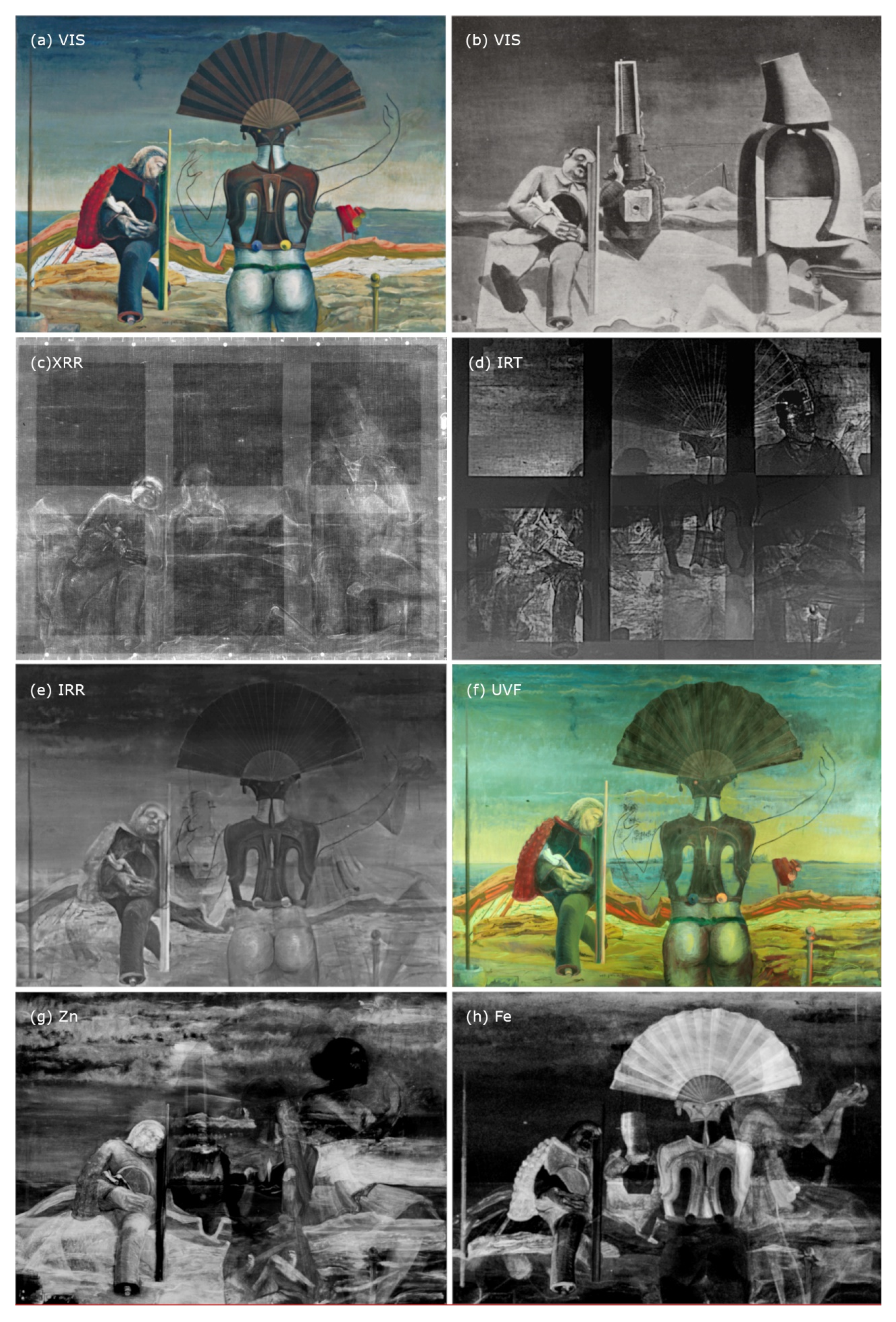


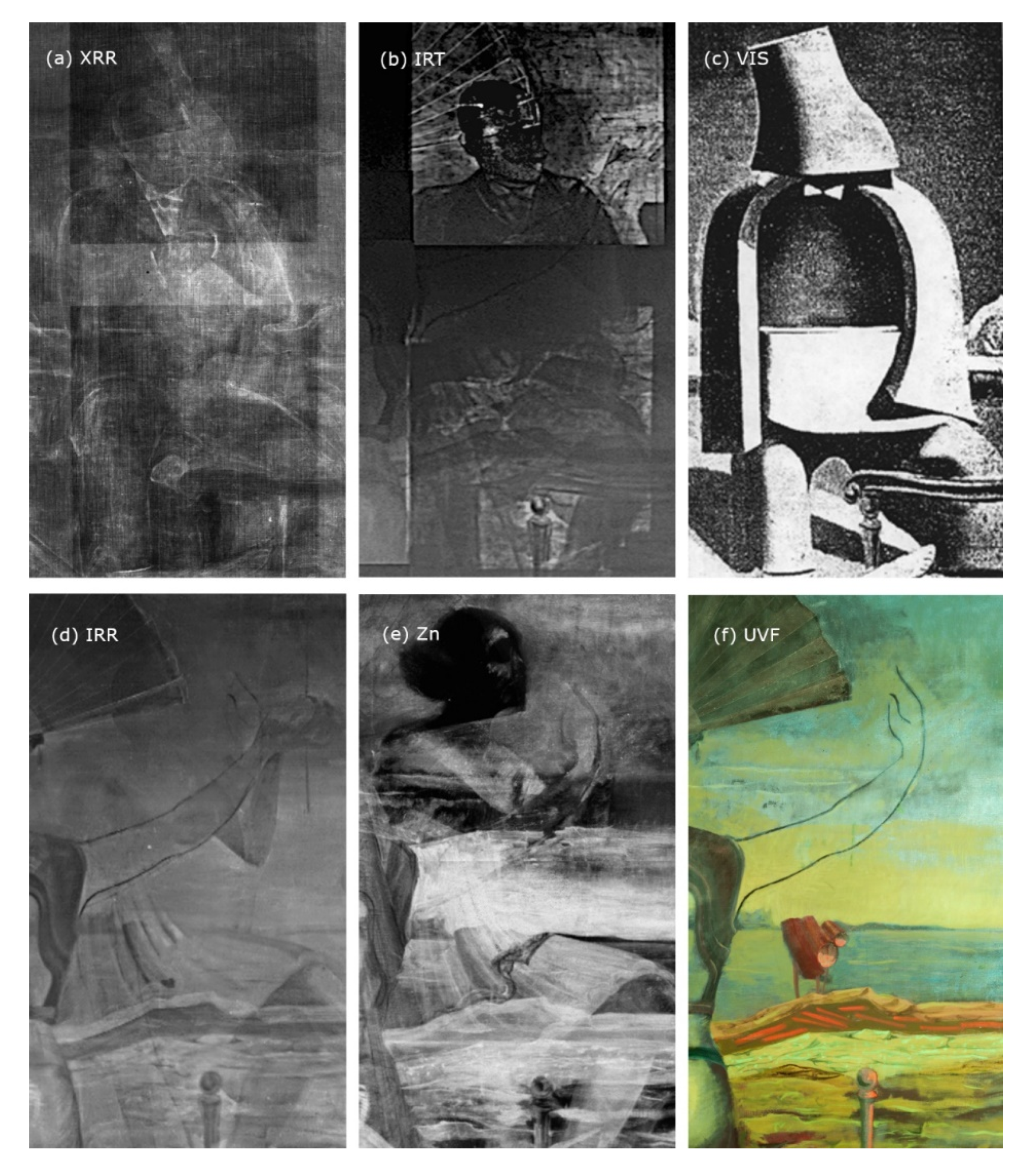


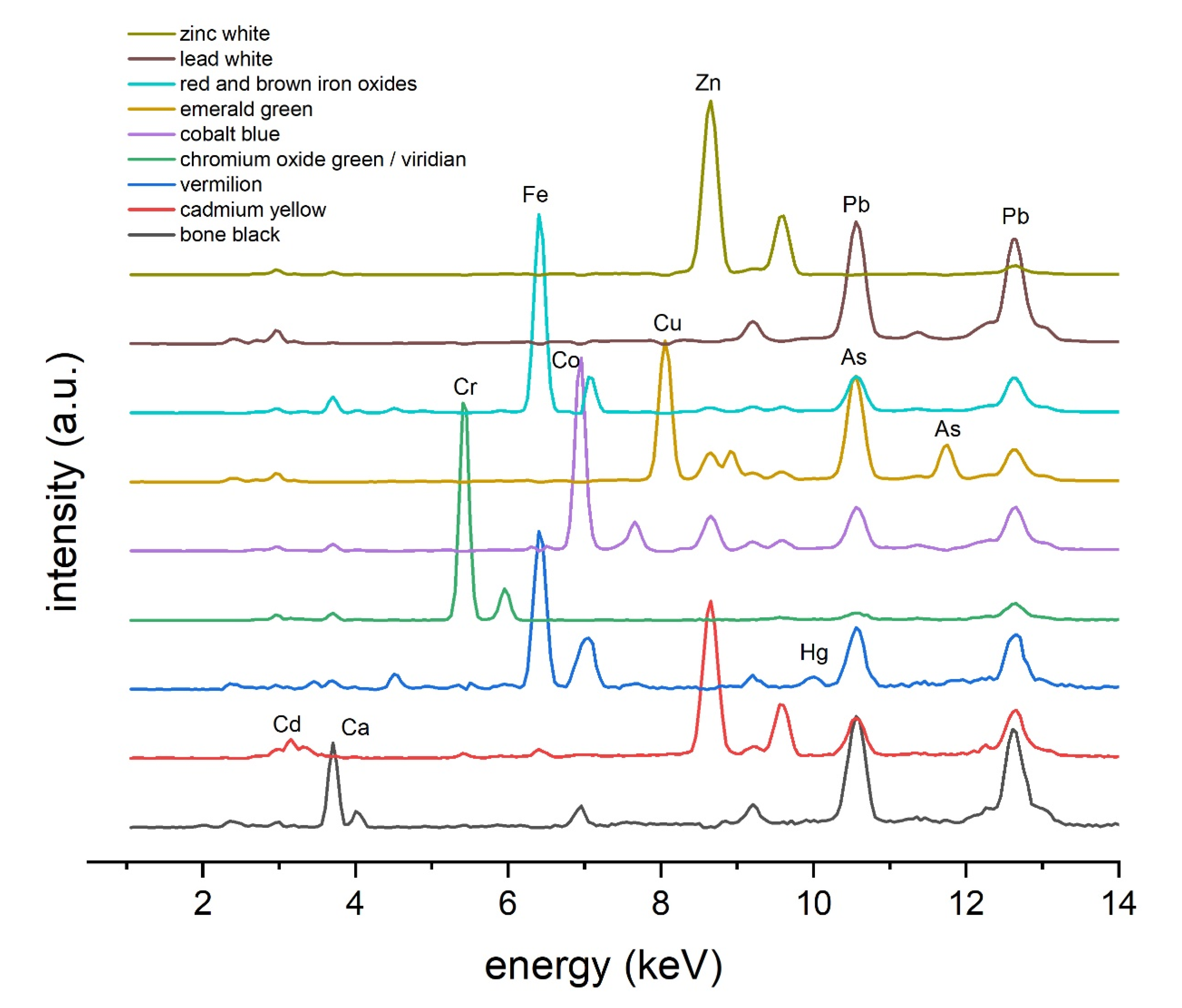
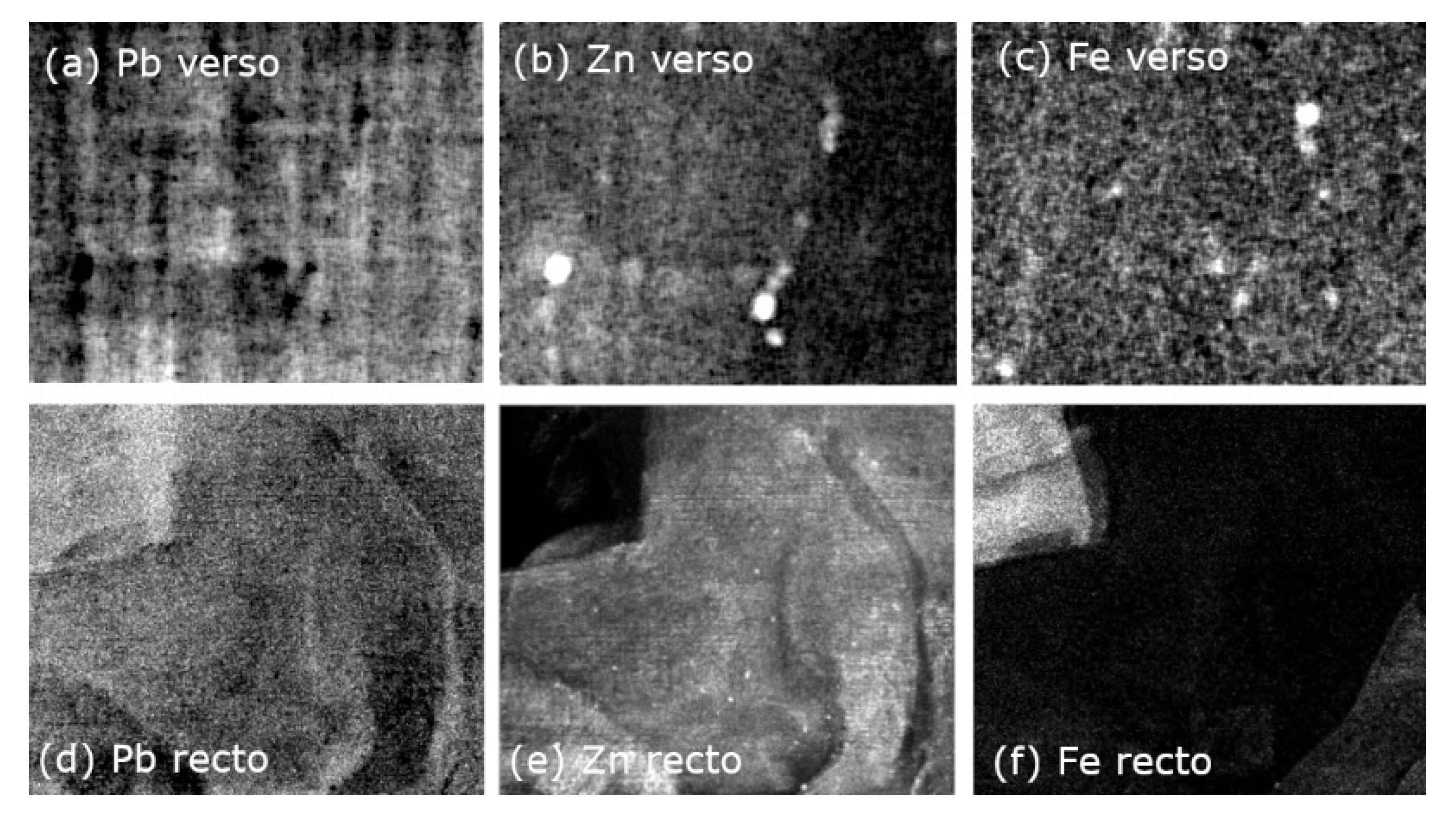
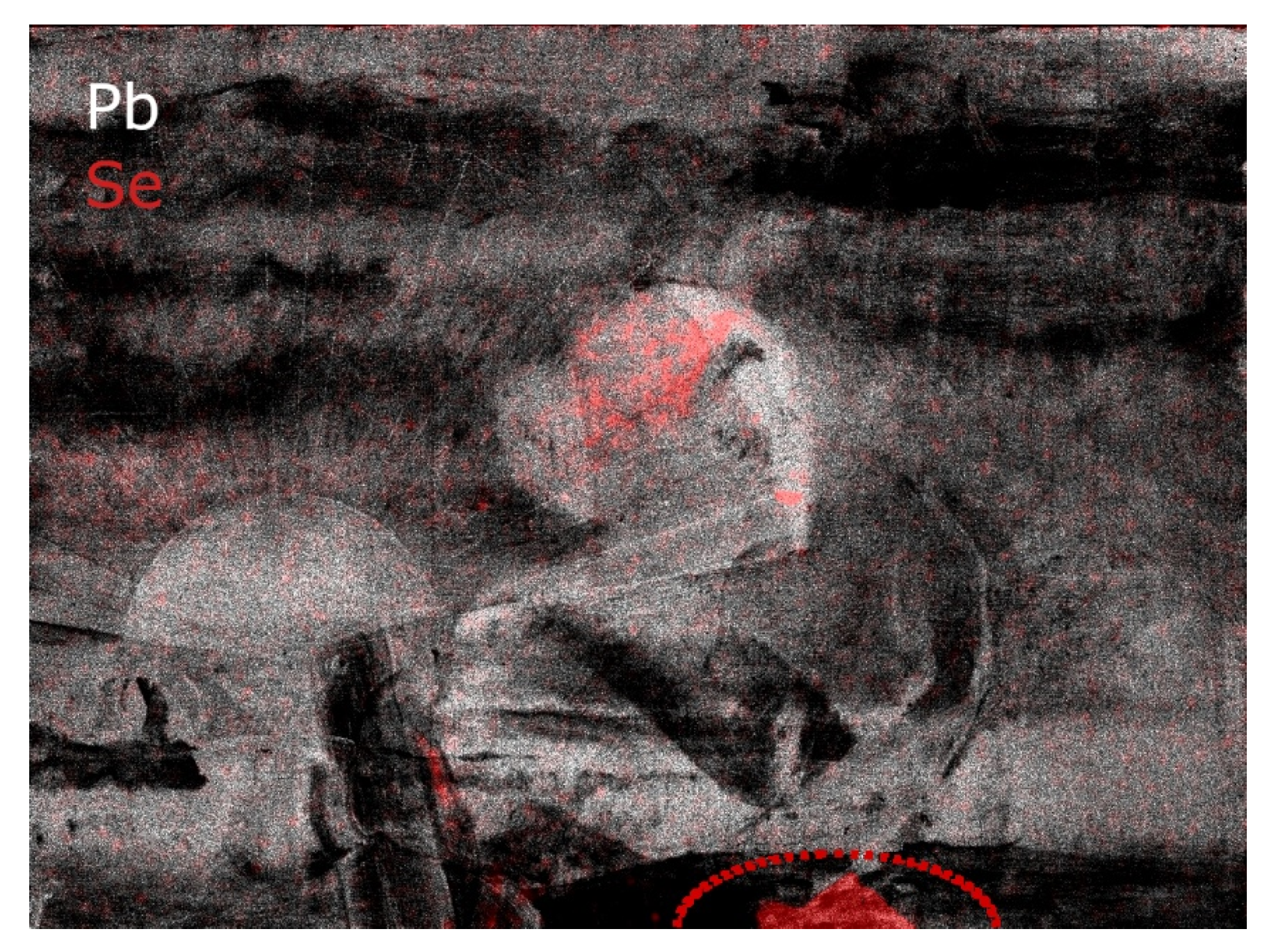
Publisher’s Note: MDPI stays neutral with regard to jurisdictional claims in published maps and institutional affiliations. |
© 2021 by the authors. Licensee MDPI, Basel, Switzerland. This article is an open access article distributed under the terms and conditions of the Creative Commons Attribution (CC BY) license (https://creativecommons.org/licenses/by/4.0/).
Share and Cite
Martins, A.; Davis, E.; Kwartler, T. Max Ernst’s Woman, Old Man, and Flower (1923–24): Four Paintings in One Revealed by Technical Imaging. Heritage 2021, 4, 2224-2236. https://doi.org/10.3390/heritage4030125
Martins A, Davis E, Kwartler T. Max Ernst’s Woman, Old Man, and Flower (1923–24): Four Paintings in One Revealed by Technical Imaging. Heritage. 2021; 4(3):2224-2236. https://doi.org/10.3390/heritage4030125
Chicago/Turabian StyleMartins, Ana, Ellen Davis, and Talia Kwartler. 2021. "Max Ernst’s Woman, Old Man, and Flower (1923–24): Four Paintings in One Revealed by Technical Imaging" Heritage 4, no. 3: 2224-2236. https://doi.org/10.3390/heritage4030125
APA StyleMartins, A., Davis, E., & Kwartler, T. (2021). Max Ernst’s Woman, Old Man, and Flower (1923–24): Four Paintings in One Revealed by Technical Imaging. Heritage, 4(3), 2224-2236. https://doi.org/10.3390/heritage4030125





